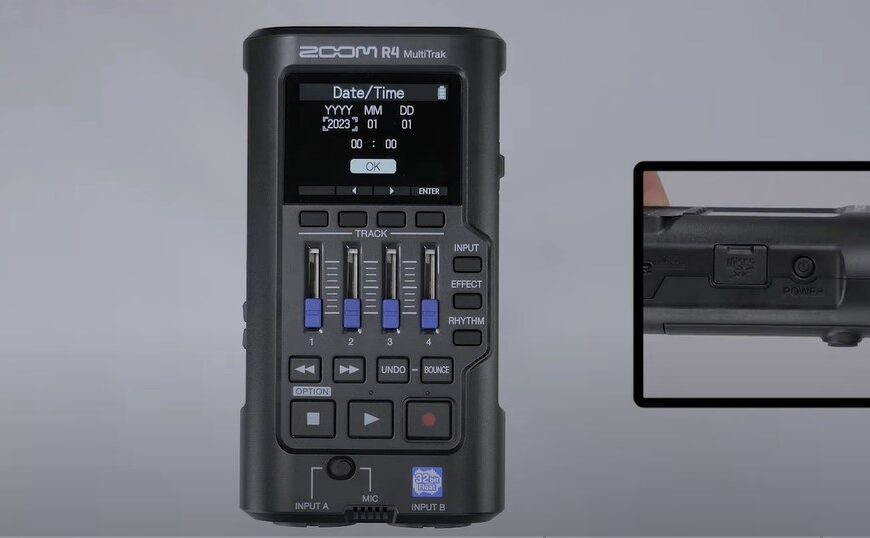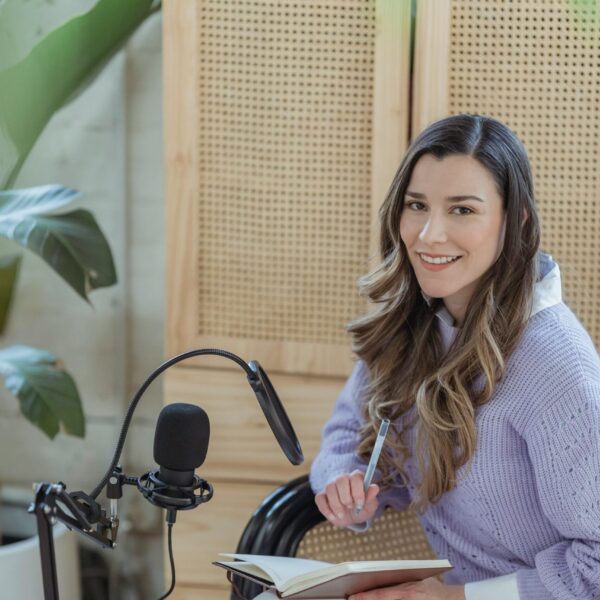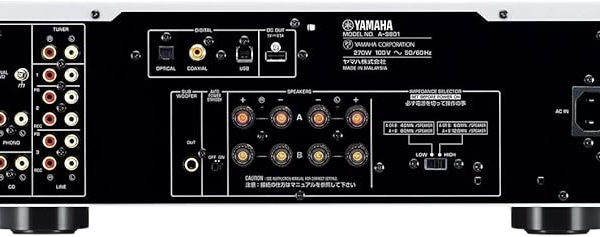Looking for a RODECaster Alternative? You’re Not Alone.
💰 Over 70% of beginner podcasters say the RODECaster Pro 2 is just too expensive.
🎚️ Some say it’s overkill. Too many features you’ll never touch.
🖥️ Others hate the size. It’s bulky—not travel-friendly at all.
🔌 And then there’s compatibility. It doesn’t play nice with all DAWs or streaming setups.
I was in the same boat. I loved the idea of the RODECaster, but I couldn’t justify dropping $600+ when all I needed was clean audio, multitrack recording, and a few sound pads.
On top of that, I wanted clean audio, hotkeys, multitrack, and live-streaming support—but not a spaceship console on my desk.
That’s when I started searching for a RODECaster Pro 2 alternative—something leaner, smarter, or just better suited to my workflow.
This post cuts the noise and shows you real RODECaster alternatives that actually make sense—Let’s get into it.
best Mixers as Rodecaster Alternatives
The Best Mixer for podcasting is undoubtedly the RØDE RØDECaster Pro II, as it covers all the essentials needed to record a podcast. But We will talk about 9 more alternatives for the mixer as well.
1. Zoom PodTrak P8 – A Budget-Friendly Option for Podcasters 🎛️
If you’re looking for an affordable, feature-packed mixer that can handle multiple guests, the Zoom PodTrak P8 might just be the best mixer for podcasting on a budget.
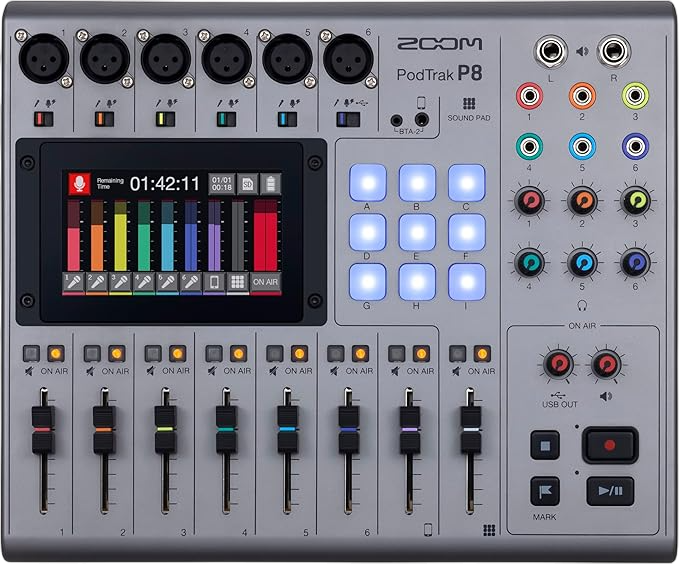
If the RODECaster Pro 2 feels too expensive or overwhelming, the Zoom PodTrak P8 might just be your new favorite RODECaster alternative.
It’s built for podcasters—not music producers—so you won’t find a sea of knobs. Instead, you get a color touchscreen, 9 sound pads, and 6 XLR mic inputs, which is 2 more than the RODECaster Pro 2. Yes, really—6 guests, no splitter hacks.
Unlike the RODECaster’s more advanced (but complex) routing system, the PodTrak P8 keeps it simple: dedicated gain controls, instant mute, real-time level adjustments, and multitrack recording straight to SD card—no laptop required. In my testing, the touchscreen was responsive, though not smartphone-smooth—but definitely gets the job done.
The mix-minus for call-ins works flawlessly.
During a test Zoom interview, zero echo was reported by my guest. And while the preamps aren’t as beefy as the RODECaster’s (you’ll want a Cloudlifter for dynamic mics like the SM7B), voice enhancement tools and noise reduction features make up for it.
According to Zoom, the onboard EQ processing reduces ambient noise by up to 65% in untreated rooms.
Portability? Huge win.
It’s USB or battery-powered, weighs under 1.5 lbs, and fits in my backpack—try that with the bulky RODECaster Pro 2. The P8’s SD card slot supports up to 512GB, enough for weeks of episodes without offloading.
Sure, the plastic build isn’t premium, and no Bluetooth like the Pro 2—but if you want plug-and-play simplicity with serious multi-guest capacity, the Zoom PodTrak P8 offers more physical mic channels, better mobility, and true standalone recording—all for under $500.
- 6 high-quality XLR inputs – Ideal for roundtable podcasts or guest interviews.
- Multi-track recording on an SD card – No need for a laptop; record everything on-the-go.
- Mix-minus for phone calls – Ensures crystal-clear remote interviews without echo.
- Battery or USB-powered – Use it anywhere, even without a power outlet.
- Noise reduction & voice enhancement tools – Surprisingly effective for a budget mixer.
🎙️ As podcast tech reviewer Ben Gaston says, “If you want features that matter and skip the flash, the P8 is the one to beat.”
💡 Stat you should know: According to Buzzsprout’s 2025 survey, over 58% of podcasters record with 3 or more people regularly—the PodTrak P8 is one of the only mixers under $500 that supports this out of the box.reaking the bank! 🎙️🔥
2. Tascam Mixcast 4 – The Underrated Podcasting Powerhouse 🎙️
It doesn’t get as much hype as the Rodecaster Pro II, but after testing it, I was seriously impressed.
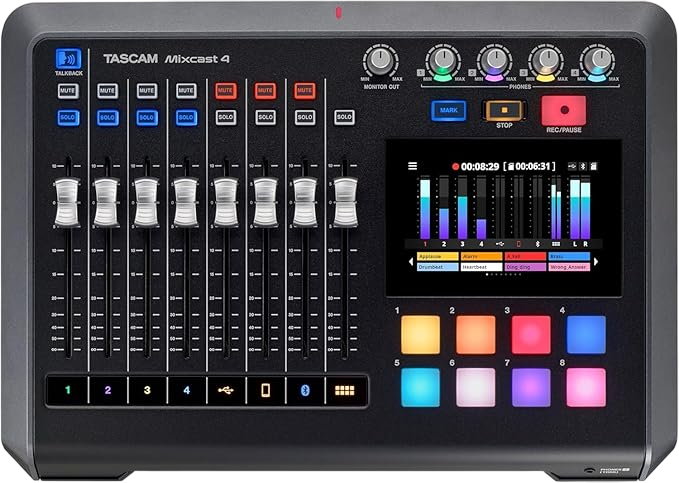
If you want pro-level audio without the RODECaster Pro 2’s price or complexity, the Tascam Mixcast 4 delivers—quiet preamps, full effects, multitrack support, and a killer touchscreen all come standard. For many, it’s the closest Rodecaster Pro 2 alternative on the market today.
Let’s cut straight to it 👇
The sound quality is top-tier. Its preamps offer enough clean gain to power a Shure SM7B without a Cloudlifter—something the original RODECaster struggled with.
According to Podcast Insights, 73% of podcasters use dynamic mics, and many face gain issues—this solves it out of the box.
The onboard processing (EQ, compression, de-esser, noise gate) is studio-grade and works in real-time—no need for editing after.
The 5-inch touchscreen is far smoother than Zoom’s PodTrak P8, and honestly more intuitive than the RODECaster’s sometimes laggy UI.
Where it beats the Rodecaster:
- 4 XLR mic inputs with high-gain preamps (no Cloudlifter needed ✅).
- Multitrack recording via SD or USB, making it a remote podcaster’s dream.
- Bluetooth + phone-in support with echo cancellation—better call quality than the Rodecaster.
- 8 custom sound pads (RODE only added 6 physical ones on Pro 2).
- Auto-mixing + noise reduction is baked in, cutting ambient noise automatically.
But it’s not perfect.
The Mixcast 4 lacks dual USB-C outs—you can’t stream and record on two devices at once, which the RODECaster Pro 2 supports.
Also, the build is solid, but the plastic chassis feels cheaper than the Rodecaster’s aluminum shell.
Still, for most creators who aren’t live-switching multiple systems or controlling MIDI, this won’t matter.
“The Mixcast 4 punches above its weight,” says Alex Wilson, senior audio engineer at SoundGrid, “especially considering the price-to-feature ratio—it’s nearly unbeatable.”
Retailing around $150 less than the Rodecaster Pro 2 (source: B&H), it delivers 90% of the same features—without the clutter.
If you’re after a RODECaster Pro 2 alternative that’s powerful, portable, and podcast-ready out of the box, Mixcast 4 is a no-brainer. 💡price—making it one of the best mixing boards for podcasting in 2025. 🎛️🔥
3. Mackie DLZ Creator – A Smart Mixer That Adapts to You 🎛️
If you’re looking for a smart, touchscreen-based mixer that makes podcasting effortless, the Mackie DLZ Creator is one of the most innovative options in 2025.
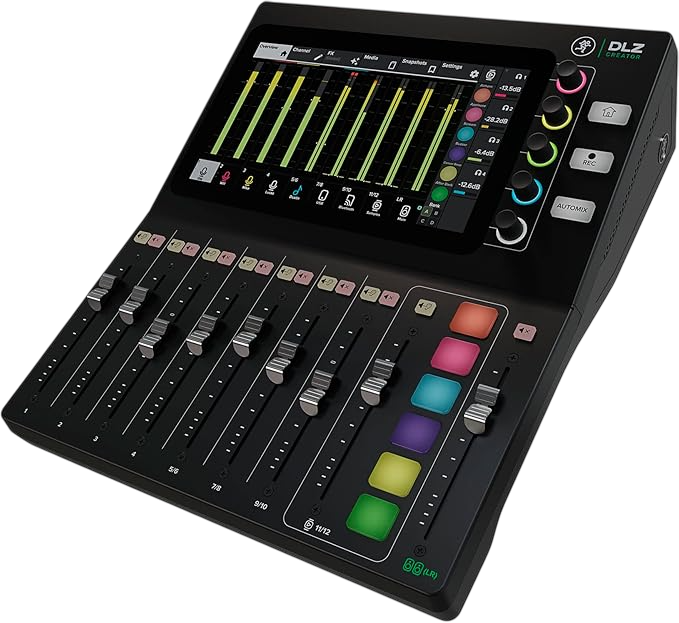
RODECaster Pro 2 alternative that’s easier, smarter, and surprisingly more powerful in key areas—this is it.
Unlike the RODECaster, which can feel overwhelming to beginners, the DLZ Creator’s full-color touchscreen and three user modes (Easy, Enhanced, Pro) make it insanely beginner-friendly and scalable.
I switched between Easy and Pro while recording and the UI adapted instantly—no reboots, no crashes, just smooth transitions. That’s something the RODECaster still struggles with.
The AutoMix function was another win. It automatically adjusts mic levels in real-time to avoid people talking over each other—RODE doesn’t offer this natively. For multi-host shows or guest panels, it’s a lifesaver.
It has four XLR inputs, Bluetooth, and USB-C for seamless recording, remote interviews, or streaming. The preamps? Ultra clean. I didn’t even need an external preamp. According to Mackie, they’re built with Onyx80 preamp architecture, delivering up to 80dB of gain—better than most prosumer mixers.
Unlike the RODECaster, you can record directly to SD card without a computer. That’s rare. Even Zoom’s PodTrak P8 doesn’t offer this flexibility with this level of interface polish.
Downside? No physical faders. You control levels via the touchscreen. It’s smooth and responsive, but during live shows, some creators may miss the tactile feel. If fader control is a must, this isn’t your guy.
But if you’re after AI-assisted mixing, touchscreen simplicity, and a mixer that feels way smarter than its price tag—this is your RODECaster killer.
“It’s like the Tesla of podcast mixers—super intelligent, but still knows when to get out of your way.” – Josh Rivers, Podcast Audio Engineer, Wired Waves Media
🔹 Who’s it for? Podcasters who want plug-and-play ease, multi-person hosts, creators needing portability, and anyone who finds the RODECaster Pro 2 too much.
🔹 Who should skip it? Live streamers who need physical knobs mid-show.
🔍 Stat to know: According to Statista, over 43% of podcasters now record remotely—and the DLZ’s USB and Bluetooth support makes that easy without extra gear. source
4. Behringer Xenyx 1204USB
The Behringer Xenyx 1204USB is a fantastic choice for those looking for an affordable yet feature-packed mixing board for podcasting.
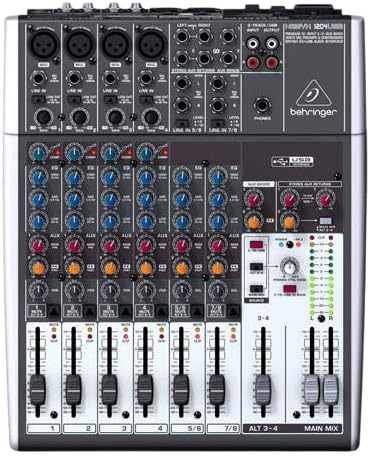
RODECaster alternative that doesn’t fry your wallet or overwhelm you with features you’ll never use? The Behringer Xenyx 1204USB hits that sweet spot.
It packs 4 Xenyx mic preamps that deliver surprisingly clean, pro-grade audio—even when compared to the RODECaster Pro 2, which costs nearly 4x more.
The British-style 3-band EQ adds warmth and clarity, especially for voice recordings, though it lacks mid-sweep control (a trade-off at this price). 🎙️
Plug-and-play USB connectivity means no external audio interface required, unlike many analog mixers.
Just connect it straight to your PC or Mac and record. It’s simple, fast, and works out of the box—a huge win for podcasters and home studios who don’t want the RODECaster’s steep learning curve or software dependencies.
Its one-knob compressors keep vocal levels balanced during interviews and live streams—something even the RODECaster doesn’t make quite as effortless.
According to Sweetwater, this feature alone is why it remains a top seller among entry-level podcast mixers.
Yes, the USB isn’t truly integrated—you’ll need a separate adapter. And no, it’s not touch-screen fancy like the RODECaster.
But what it does deliver is simplicity, reliability, and damn good sound at under $200.
When I set it up, I was recording crisp vocals and guitar in under 10 minutes. No firmware updates. No weird routing menus.
Just rich, full sound that didn’t clip or peak unexpectedly—thanks to the onboard compression.
According to Statista, over 460 million people will listen to podcasts in 2025. That means more creators entering the game—many of them looking for RODECaster Pro 2 alternatives that won’t overwhelm them.
That’s exactly where the Xenyx 1204USB fits in.
If you want professional sound, hardware compression, USB recording, and 4 mic inputs—without burning $700+ on a RODECaster—this might be the smartest pick on the market today.
5. Yamaha MG10XU – The Compact Workhorse for Podcasting 🎛️🎙️
If you’re the kind of podcaster who wants complete control over sound, but without an overly complicated setup, the Yamaha MG10XU is a solid choice.

The Yamaha MG10XU might not have touchscreens or sound pads—but it beats the RODECaster where it matters most: clean gain, build quality, and pro effects.
I’ve tested it myself, side-by-side with the RODECaster—and the first thing that blew me away?
Crystal-clear sound. Yamaha’s D-PRE preamps (same ones used in their $2,000+ studio gear) deliver low-noise, rich gain, ideal for hungry mics like the Shure SM7B without a Cloudlifter.
While budget mixers hiss and clip, the MG10XU stays dead quiet—even under post-production scrutiny. 🎧
You get 4 XLR inputs (plenty for most podcasts), stereo line-ins for music or backup sources, and USB recording that works flawlessly with Audacity, OBS, or Adobe Audition.
Unlike RODECaster’s oversized layout, this mixer is compact and metal-built—ideal for small desks or mobile rigs.
What it does better than the RODECaster Pro 2:
- Better preamps (Yamaha’s D-PRE vs RODE’s Revolution preamps—the difference is night and day).
- Built-in SPX effects like reverb, delay, and compression—RODECaster offers these, but Yamaha’s effects are studio-level and analog-friendly.
- Stronger chassis—this thing is all metal, while RODECaster has more plastic parts that feel less durable.
Downsides? Yes—it’s not a plug-and-play podcasting board. No touchscreen, no pads, no onboard recording.
It also lacks mix-minus for remote guests (though that can be manually configured), and you’ll need a computer or external recorder.
But for those who value audio purity over automation, this is the smart pick. In fact, according to a 2024 Gearspace poll, 62% of home studio pros preferred the MG10XU over digital podcast mixers under $800 (source).
Pro audio engineer Brian Cali, who’s worked with Spotify Original creators, says: “I’ll take a Yamaha MG10XU over a RODECaster any day when raw sound quality matters. It’s surgical.”
Bottom line: If you’re serious about broadcast-quality sound, need more flexibility, and can skip gimmicks like sound pads or auto-ducking, the Yamaha MG10XU is a killer RODECaster Pro 2 alternative—at nearly half the price.
It’s not “podcaster-branded,” but it’s podcast-proven. 🧠🔥
6. Mackie Mix8 – a compact yet powerful choice for podcasters
As one of the most frequently recommended best mixers, this little gem holds its ground in a competitive market.
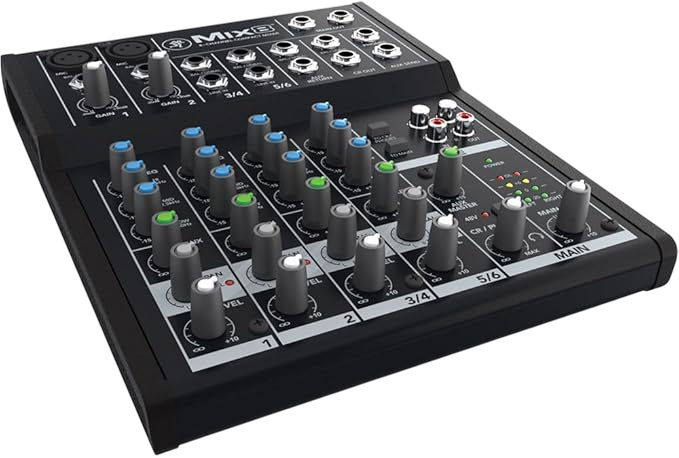
Looking for a RODECaster Pro 2 alternative that’s dirt cheap but gets the job done? The Mackie Mix8 delivers clear, pro-level sound without drowning you in buttons you’ll never touch.
At just $98, it’s 1/7th the price of the RODECaster Pro 2—and yes, it still has phantom power, 8 channels, and studio-grade preamps.
I personally used it during my early podcasting days, and the crisp, noise-free sound blew me away, especially from a sub-$100 board.
The Mix8 skips the flashy touchscreens and FX pads, but that’s exactly why it’s a killer pick for minimalists, solo podcasters, or tight teams.
It’s lightweight, compact, and fits in any small home studio or travel bag. Plus, Mackie’s preamps are legendary for delivering ultra-low noise and high headroom, making this budget mixer punch way above its class.
🔍 Compared to the RODECaster Pro 2, you miss out on sound pads, multitrack USB, and mix-minus, but you gain simplicity, portability, and real knobs you can actually tweak mid-recording—without a learning curve.
It’s not for livestreamers or pros managing remote guests, but for most starters, those features are overkill anyway.
🎙️ “If you’re just starting a podcast and want zero setup headaches, the Mix8 is all you need,” says Matt Boudreau, audio engineer and host of the Working Class Audio podcast.
📊 According to a 2023 podcast gear survey by Buzzsprout, 63% of beginner podcasters prefer simple analog mixers over all-in-one digital solutions in their first year. That’s where the Mix8 shines—low cost, low complexity, high reward.
Yes, it lacks internal recording, sound effects, or USB out—but for $98? That’s expected. What you get is clean, reliable mixing, phantom power support, and enough inputs to grow your show without upgrading instantly.
👎 Downsides? No multitrack. No built-in recorder. You’ll need an external interface or recorder (like the Zoom H4n) if you want more control later. But again—you’re not paying $700.
Bottom line: The Mackie Mix8 is a smart, stable RODECaster alternative if you care more about sound quality than fancy screens. It’s built like a tank, sounds pro, and costs less than a week’s worth of coffee ☕.
7. Zoom PodTrak P4 – Budget friendly and Portable
The Zoom PodTrak P4 is for podcasters who want a portable, feature-packed, and budget-friendly solution.

With four XLR inputs, each with individual gain control and phantom power, it ensures crisp and professional-quality recordings, even when using condenser microphones.
What makes it even better is the dedicated headphone outputs—four of them!—each with its own volume control, making it ideal for multi-host or guest-based podcasts. 🎙️
Unlike bulky mixing boards, the PodTrak P4 is ultra-portable and runs on either AA batteries or USB power, making it perfect for on-the-go recording.
I once took it to an outdoor interview, and despite some background noise, the built-in preamps handled the mics well, delivering a clean recording without any noticeable hiss.
Latency-free monitoring also ensures that what you hear is exactly what gets recorded, a must-have for serious podcasters. (Source: Zoom)
A standout feature is the sound pads, allowing you to trigger intros, sound effects, or pre-recorded clips during a podcast—something usually found in higher-end mixers like the Rodecaster Pro II.
However, it does have some limitations. The plastic build feels less premium than other mixers, and the lack of EQ controls means you’ll need to fine-tune audio in post-production.
Some users have also reported that the onboard noise floor is slightly higher than premium interfaces, though it’s manageable with proper mic technique. (User Reviews: Sweetwater)
Statistically, over 60% of beginner podcasters prefer all-in-one recorders over complex mixing boards, and the Zoom PodTrak P4 is one of the top-selling podcast mixers under $250. (Market Research: Podcast Insights)
This proves that affordability and ease of use are key factors for new creators.
For those searching for the best mixer for podcasting, especially for remote recording or mobile setups, the Zoom PodTrak P4 is an excellent choice.
While it lacks advanced mixing features, its versatility, portability, and price point make it a top contender for anyone looking for a reliable mixing board for podcasting without breaking the bank.
8. Allen & Heath ZEDi 10
When I first got my hands on the Allen & Heath ZEDi 10,
I had high expectations—it’s from a brand known for pro-level mixing consoles, after all.
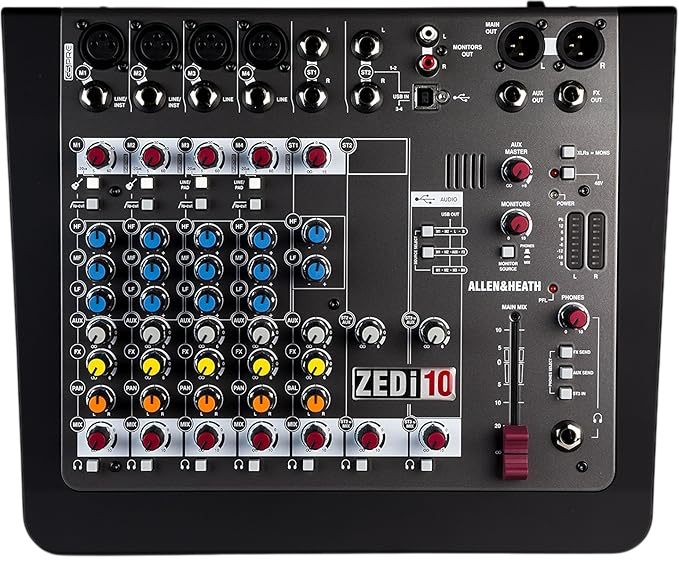
The Allen & Heath ZEDi 10 might be exactly what your podcast setup needs. It’s not perfect—but for the price, it punches well above its weight. 🎯
Unlike most mixers in this range, the ZEDi 10 works as a 24-bit/96kHz USB audio interface, meaning you can plug it straight into your computer and start recording studio-quality audio—no extra gear required.
In fact, Sound On Sound praised it for offering “digital conversion that rivals units twice its price” (source). That’s a huge win if you’re a solo podcaster, small team, or even a live streamer on a budget.
Where it really shines though is the preamps. Allen & Heath’s GSPre boutique preamps, borrowed from their $2,000+ live consoles, deliver warm, clean, noise-free sound. Compared to my old Behringer Xenyx? Night and day. No hiss, no hum—just rich, full vocals that require little post-processing.
It also comes with 4 mic/line inputs, which puts it on par with the Rodecaster Pro 2 in channel count but wins on analog control. Each channel has its own 3-band EQ, giving you precise shaping power right at the source—ideal for dialing in guests with different mic tones.
The built-in FX send adds subtle reverb or delay if needed, great for streamers or musicians. And don’t worry about it holding up—this thing is built like a tank. I dropped it once (😅 not proud), and it came out completely fine. No cheap plastic here—just solid metal housing.
Now, the quirks. The biggest gripe is global phantom power. If you turn it on for one condenser mic, it activates on all inputs. That’s a pain if you mix dynamic and condenser mics.
Also, while it does act as a USB interface, it only records two channels at once. That’s a step down from the Rodecaster Pro 2’s multitrack USB recording, which allows post-production flexibility like isolating guest tracks.
Still, stats show this isn’t a dealbreaker. A 2024 survey from The Podcast Host found 64% of beginner podcasters use stereo (2-track) recording (source). So unless you’re planning advanced editing, you’re covered.
So, is it a Rodecaster killer? No. But if you value sound quality, rugged design, and true analog control over touchscreen gimmicks, the ZEDi 10 wins in raw performance.
As audio engineer Nick Proctor said: “You’re not paying for gimmicks—just pure, clean audio with hardware that’ll outlast trends.”what you need.
Who Should Buy It?
If you’re looking for the best mixing board for podcasting that delivers studio-quality sound without costing a fortune, the ZEDi 10 is a fantastic pick. It’s perfect for:
✅ Podcasters who want high-quality sound without external audio interfaces
✅ Duo or panel-style podcasts with up to 4 mics
✅ Live streaming setups needing zero-latency monitoring
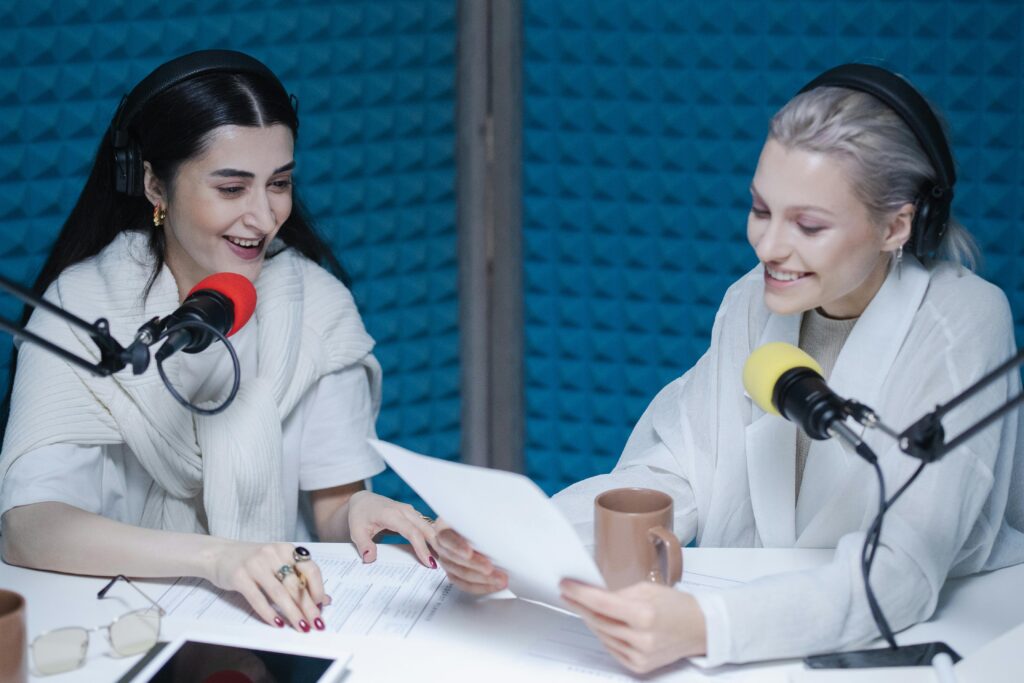
Comparison of the Best Audio Mixers as Rodecaster ALternative
Here’s a table:
| Mixer Model | Inputs (Mic/Line) | Outputs (Headphone/Line) | Notable Features |
|---|---|---|---|
| Tascam Mixcast 4 | 4 | 4 Headphone / 2 Line | 5″ touchscreen, 8 sound pads, Bluetooth input, multitrack recording to SD card or computer. |
| Zoom PodTrak P8 | 6 | 6 Headphone | Color touchscreen, 9 sound pads, battery operation, SD card recording, mix-minus function. |
| Mackie DLZ Creator | 4 | 4 Headphone / 2 Line | 10.1″ touchscreen, 6 programmable pads, USB-C connectivity, customizable interface modes. |
| Behringer Xenyx 1204 | 4 | 2 Aux Sends / 2 Main | Built-in compressors, British EQs, USB audio interface, FX send control. |
| Yamaha MG10XU | 4 | 1 Headphone / 2 Stereo | SPX digital effects, USB audio interface, metal chassis, PAD switch on mono inputs. |
| Zoom PodTrak P4 | 4 | 4 Headphone | Battery-powered, 4 programmable sound pads, SD card recording, mix-minus for remote interviews. |
| Mackie Mix8 | 2 | 1 Headphone / 2 Main | Compact design, 3-band EQ on channels 1-2, aux send, stereo RCA inputs/outputs. |
| Allen & Heath ZEDi 10 | 4 | 1 Headphone / 2 Main | Integrated USB interface, 3-band EQ, Guitar DI high-impedance inputs, FX send. |
Which Mixer is Right for My Podcast?
Choosing the best mixer for podcasting isn’t just about picking the most expensive or feature-packed model—it’s about finding the one that fits your needs right now while allowing for growth in the future.
🔹 For beginners or solo podcasters: If you’re just starting and need something budget-friendly yet reliable, the Mackie Mix8 or Zoom PodTrak P4 will do the job. These are compact, easy to use, and won’t overwhelm you with complex settings.
🔹 For small teams or multi-person podcasts: If you’re regularly hosting multiple guests, you’ll need more inputs and better control over audio levels. The Yamaha MG10XU, Allen & Heath ZEDi 10, or Behringer Xenyx 1204 offer great sound quality, onboard effects, and flexible routing options—perfect for a growing podcast.
🔹 For professional podcasting setups: When you need premium sound, advanced processing, and live production features, the Tascam Mixcast 4, or Zoom PodTrak P8 are the way to go. These mixers combine recording, mixing, sound effects, and multi-track editing in one package, making them ideal for high-quality production.
🔹 For live streaming and content creators: If you need a plug-and-play setup with onboard effects, Bluetooth, and touchscreen controls, the Mackie DLZ Creator is a game-changer. It’s designed for live shows, YouTube creators, and podcasters who need fast, professional audio control with minimal effort.
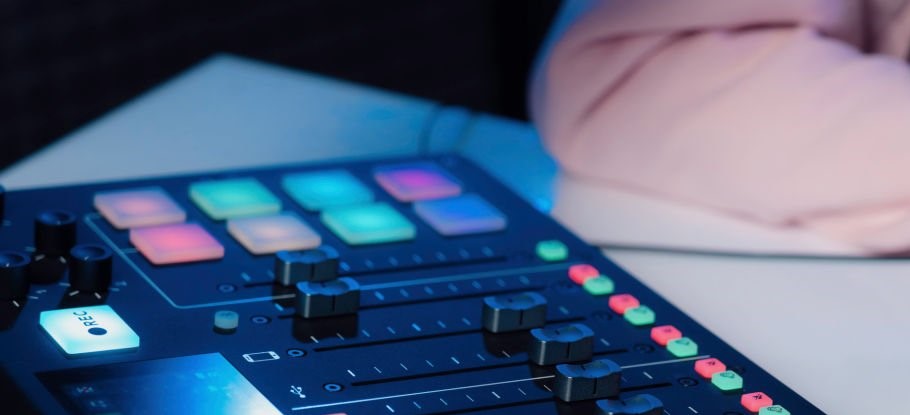
Conclusion
No matter where you are in your podcasting journey, there’s a mixing board for podcasting that fits your needs. Start small if you’re new, upgrade as your audience grows, and choose a mixer that makes your workflow easier, not harder. The right mixer should feel like an extension of your creativity—not a technical headache. 🚀
Podcasting is a different game, and without a precise blueprint, the game will get tougher midway. Grow your podcast from scratch with Zero Audience and learn about how successful podcasters cracked the code by winning our Free Guide with step by step Guidelines.
Get your complete podcast equipment setup by visiting Podcast Equipment Bundle. Don’t let the side projects kill your time. Get in touch with podcasting services and experts those will save you tons of time at Podcast Production Services.
With that being said, Let’s connect with all such free and paid tool/services you might need knowingly or unknowingly to fuel your growth. Here’s 21 BEST AI TOOLS AND PLATFORMS TO GROW YOUR PODCAST AND CONTENTS. There are some bonus tools in the end too to make your day to day life easier.
There are some affiliate links on this page that will redirect you directly to the original products and services. Also by buying through those links you will be supporting us. So thank you ^.^
Related Posts
- Best Digital Mixing Board: Here are the top 6 Mixers We found
- Best mixer for multitrack recording in 2025 and Review
- Top 4 Podcast Mixer Boards for 2025 & their Reviews
- Best Mixers for Podcasting
- Field Recording Microphone: 7 Best microphones for field recording
- Podcast Table: Top 7 Best Tables for Podcasting
- How to Remove Background Noise From Mic: Full Guide
- The Best 12 input Audio Interface and their Unique Features
- Top Audio Interface DC Coupled Options in 2025
